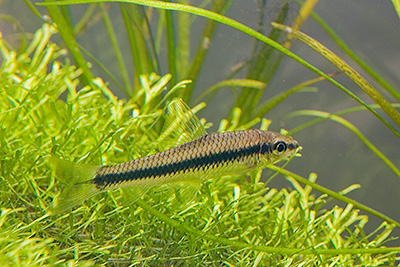When I first received back my Carinotetraodon travancoricus (“Dwarf Puffer”) from the fish pusher, I noticed that it was not the same fish that I had given to him – along with the Otocinclus, which sadly passed away. I had grown quite attached to my previous Carinotetraodon travancoricus (“Dwarf Puffer”) so had planned to swap the one given to me for the previous one. After speaking with the fish pusher he said that he had my old Puffer so it wouldn’t be a problem.
But now that the new one is settled in I think I will hang on to him/her. At first it seemed a little inactive and I liked the way my previous one paraded around the tank and took no nonsense. Now though, this new one has settled in and is just as bullish, so seems a shame to uproot him/her again.
Oh, and he/she is certainly doing their job – not a hint of snails anywhere now. Cool little snail eating animal!

